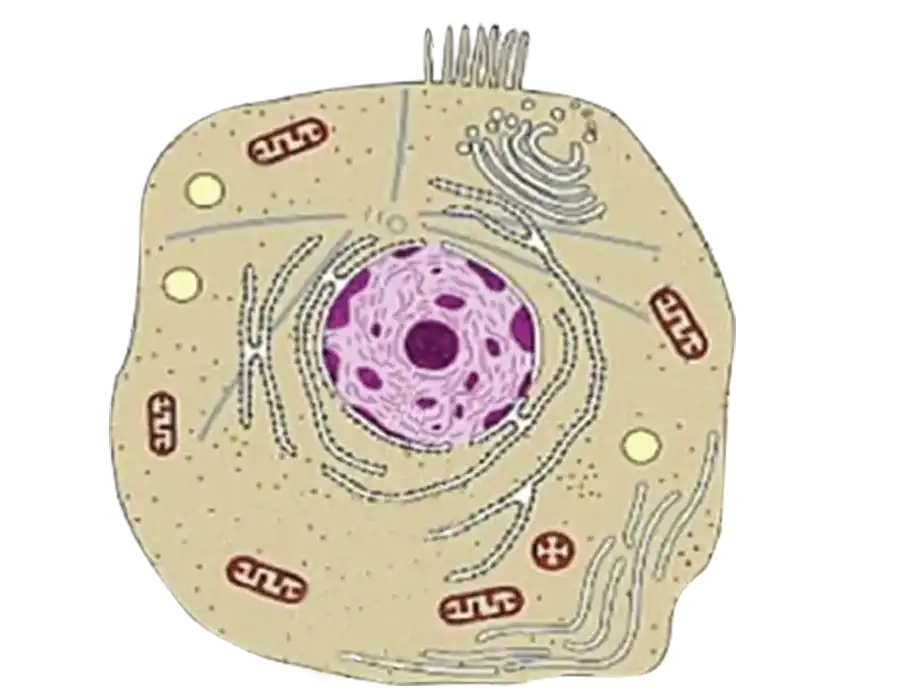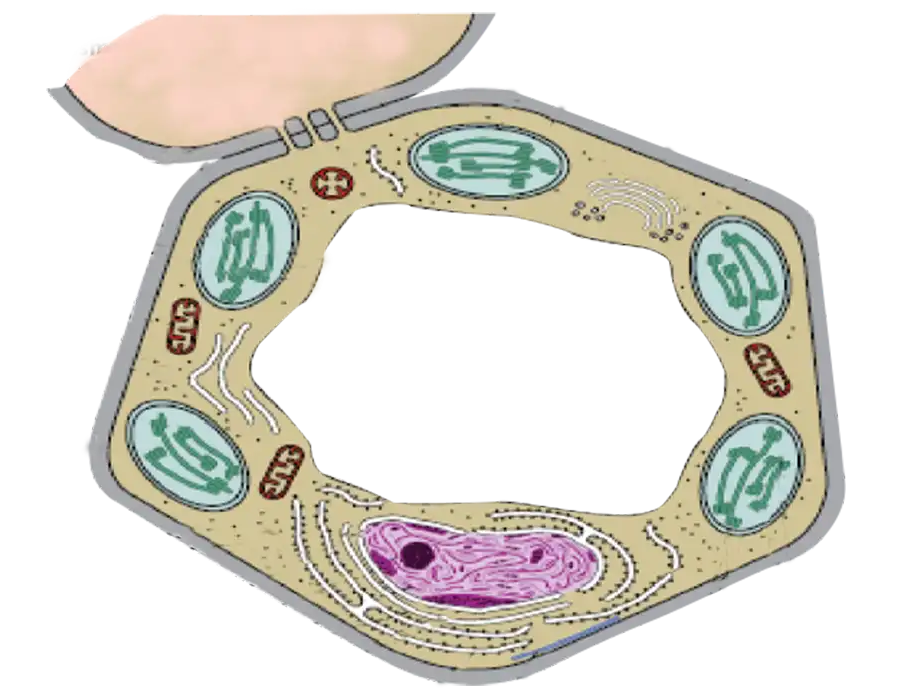Lesson Note on Biology
CELL STRUCTURE
Ultrastructure of animal cell and plant cell
Theme: Cell Structure and Specialization
Topic: Cell structure
Sub Topic: Ultrastructure of Animal Cell and Plant Cell.
Date: dd/mm/yyyy
Class: S.S.S 1
Duration: 30 Minutes
No of Learners: 30
Learning Objectives:
By the end of the lesson learners should be able to:Defined a cell and Cytology.
A Cell is the basic unit of life. All living organisms are made up of cells.
Cytology is the study of the structure and function of cells.State cell theory and list the main principles of cell theory.
- The cell theory states that all living organisms are made up of cells, and cells are the basic unit of structure-function in all living organisms.
- The main principles of cell theory are based on the following ideas.
- All known living organisms are made up of one or more cells.
- All cells come from pre-existing cells by division.
- Cells contain the hereditary information that is passed from cell to cell during cell division.
- Metabolism takes place in cells.
- Given suitable conditions, cells are capable of independent existence.
Draw and label the ultra-structure of a cell.
Ultrastructure is the detail of the cell as revealed by the electron microscope. Animal cell
Animal cell
 Plant cell
Plant cell
List the similarities between animal cells and plant cells.
- Both have a cell membrane, a cytoplasm and a nucleus.
- Both animal and plant cells have mitochondria, Golgi apparatus, Reticulum endoplasmic, lysosome, big ribosomes (the 80S), peroxisome, microtubules.
List the differences between animal and plant cells.
FEATURE ANIMAL CELL PLANT CELL Shape Ovoid or spherical Polygon Plastids Absent Present Centrioles Present Absent Vacuole Small or absent Big with a tonoplast Cell wall Absent Present Microvilli Present Absent Plasmodesmata Absent Present List the classification of the living organism.
- Unicellular organisms are made of only one cell, such as Bacteria, Yeast, Ameoba, Paramecium etc.
- Multicellular organisms are animals and plants composed of many cells. In multicellular organisms, cells divide and then undergo differentiation or specialisation for specific functions.
Rationale:
You may know of someone who has been ill with a disease or disorder such as meningitis, malaria, diabetes, a type of cancer, cystic fibrosis, or Alzheimer’s disease. All these diseases and disorders are caused by problems at a cell or molecular level. Physical damage such as a burn or broken bone also causes damage at the cell level.
Biotechnology uses techniques and information from cell biology to genetically modify crops to produce alternative characteristics; to clone plants and animals; to produce and ensure high-quality food is available at lower costs; to produce purer medicines and in time organs for the many people who need transplants. It is therefore important to teach the learners' cell structure of plants and animals.
Prerequisite/ Previous knowledge:
The learners have learnt about the microscope.Learning Materials:
Microscopes, micrographs, pens andReference Materials:
- Kent M. (2000). Advanced Biology. Oxford University Press, Oxford, UK.
- Campbell, N.A, et al. (2008). Biology, Pearson International Edition, San Francisco, USA, 8th edition.
- Pete K. Frank S. (2008). OCR Biology. Pearson Education Limited. British.
- Miller, Levine (2008). Prentice-Hall Biology. Pearson Education. The USA.
Lesson Development:
| STAGE | TEACHER'S ACTIVITY | LEARNER'S ACTIVITY | LEARNING POINTS | ||||||||||||||||||||||||
|---|---|---|---|---|---|---|---|---|---|---|---|---|---|---|---|---|---|---|---|---|---|---|---|---|---|---|---|
| INTRODUCTION full class session (10 mins) |
Asking some questions:
|
Learners' expected response.
| Learner’s entry points. Competences: Critical thinking, Communication. |
||||||||||||||||||||||||
| STEP 1 10 mins. Development | Ask students to form three groups. | Form three groups and share responsibility. | Inculcating leadership skills, competitive spirit, cooperation, teamwork and a sense of responsibility among learners. | ||||||||||||||||||||||||
| Teacher to provide learners with materials (microscopes and prepared micrographs or diagrams containing the structures of different animal cells and plant cells) and instructions and allow them to identify the materials The teacher should thereafter guide learners to define cell, cytology, state cell theory and list the classification of a living organism. | Students take materials needed for this activity, identify the materials as microscopes, micrographs or diagrams containing the structures of animal cells and plant cells. Hence define cell and cytology A Cell is the basic unit of life. Cytology is the study of the structure and function of cells. | Being able to identify the materials/apparatus. Competences: Problem-solving, communication, manipulation, cooperation and Critical thinking. |
|||||||||||||||||||||||||
| The teacher goes round to give further instructions to learners in the group where necessary. Monitor how the students are progressing towards the knowledge, skills and attitudes to be learned and boost those who are still behind (but without communicating to them the knowledge). | The students follow the teacher's directives. Students work collaboratively on the task. Both boys and girls participate actively. Observe the chart given for the Ultrastructure of a cell and identify parts that are easily recognizable when compared with a photomicrograph from a light microscope. | Cross-cutting issue: Peace and value, Financial education | |||||||||||||||||||||||||
| STEP 2 presentation of findings (10 mins) | Invite representatives of groups to presents their findings. The teacher should guide the learners with the names of each segment of the cell. | Representatives of groups to presents their findings. Others follow the presentation. The learners are to identify each segment of the cell while the teacher should guide the learners with the names.  Animal cell
Animal cell
 Plant cell
Plant cell
| Communication. | ||||||||||||||||||||||||
| STEP 3 Exploitation of students findings 5 mins | Ask students to share their observations on micrographs/ diagrams in groups. The teacher informs the learners that these observations are the main principles of cell theory, and thereafter, guide learners to state the cell theory. | Students share their observations.
|
Collaboration among group members, manipulation of results and observing the principles of cell theory. | ||||||||||||||||||||||||
| EVALUATION 10 mins | The teacher asks the students questions. From your observations:
|
| Asking the learners questions to assess the achievement of the set objectives. | ||||||||||||||||||||||||
| CONCLUSION 2 mins | Teachers wrap up from the learners' observations, summarise the learned knowledge, and give more clarification on the learned content. | Participate actively in summarizing the content. Making short notes. | Listening skills, Writing skills. | ||||||||||||||||||||||||
| Assessment/ Assignment: 5 mins | The teachers give learners a take home and engage students to work individually.
| Do exercises. | Competences: Creativity. | ||||||||||||||||||||||||